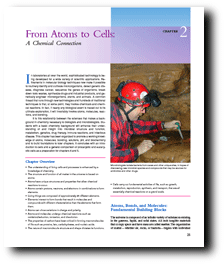
 | In laboratories all over the world, sophisticated technology is being developed for a wide variety of scientific applications. Re- finements in molecular biology techniques now make it possible to routinely identify and cultivate microorganisms, detect genetic disease, diagnose cancer, sequence the genes of organisms, break down toxic wastes, synthesize drugs and industrial products, and genetically engineer microorganisms, plants, and animals. A common thread that runs through new technologies and hundreds of traditional techniques is that, at some point, they involve chemicals and chemical reactions. In fact, if nearly any biological event is traced out to its ultimate explanation, it will invariably involve atoms, molecules, reactions, and bonding. It is this relationship between the sciences that makes a background in chemistry necessary to biologists and microbiologists. Students with a basic chemistry background will enhance their understanding of and insight into microbial structure and function, metabolism, genetics, drug therapy, immune reactions, and infectious disease. This chapter has been organized to promote a working knowledge of atoms, molecules, bonding, solutions, pH, and biochemistry and to build foundations to later chapters. It concludes with an introduction to cells and a general comparison of procaryotic and eucaryotic cells as a preparation for chapters 4 and 5. |